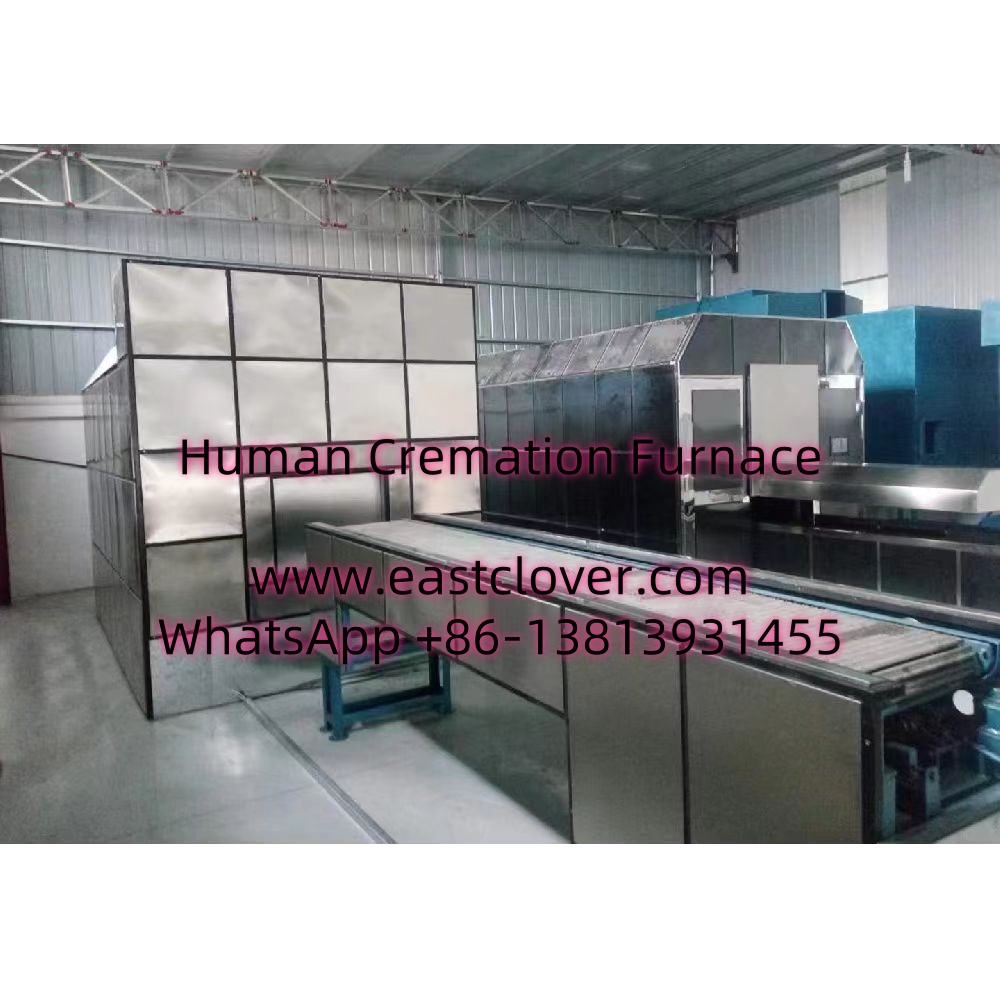Human Cremation Furnace Energy Efficient Incinerator
Cremation has long been a preferred method for handling human remains, offering a practical and space-efficient alternative to traditional burial. However, conventional cremation furnaces have faced criticism for their environmental impact, particularly regarding energy consumption and emissions. In response, the funeral industry has embraced technological advancements to develop energy-efficient cremation incinerators that align with global sustainability goals. This news explores the innovations driving this transformation and their implications for a greener future.
The Shift Toward Sustainable Cremation
Traditional cremation furnaces rely on fossil fuels like natural gas or propane, consuming significant energy to reach temperatures exceeding 1,400–1,800°F (760–980°C). This process releases carbon dioxide, particulate matter, and mercury (from dental amalgams), contributing to air pollution. As environmental awareness grows, governments and consumers are demanding cleaner, more efficient solutions. Modern cremation technology addresses these concerns through:
- Reduced Fuel Consumption: Advanced combustion systems optimize fuel use, lowering energy demands.
- Emission Control: Filters and scrubbers capture harmful pollutants before release.
- Heat Recovery: Repurposing waste heat for secondary applications.
Innovations in Energy-Efficient Cremation Technology
1. Dual-Burn Combustion Systems
Modern furnaces often incorporate dual-burn technology, where a secondary combustion chamber incinerates gases and particulates from the primary chamber. This reduces emissions by up to 90% and improves fuel efficiency by ensuring complete combustion. Sensors and automated controls adjust airflow and temperature in real time, minimizing energy waste.
2. High-Efficiency Insulation
Advanced refractory materials, such as ceramic fiber linings, retain heat more effectively than traditional brick insulation. This reduces heat loss, allowing furnaces to maintain high temperatures with less energy. Some models also feature vacuum-sealed doors to prevent thermal leakage.
3. Automation and AI Integration
Smart cremation systems use AI algorithms to analyze variables like body mass, moisture content, and casket material. This data optimizes combustion parameters, shortening cycle times and cutting fuel use by 20–30%. Remote monitoring further enhances efficiency by enabling predictive maintenance.
4. Alternative Fuel Sources
Innovators are experimenting with biofuels, hydrogen, and electric-powered furnaces. Electric models, though still niche, eliminate direct emissions and can be powered by renewable energy. Hybrid systems combine electric preheating with gas combustion to balance efficiency and cost.
5. Heat Recovery Systems
Waste heat from cremation is increasingly repurposed to warm facilities, power water heaters, or even generate electricity. For example, Sweden’s Halmstad crematorium uses recovered heat to supply 10% of the city’s district heating, demonstrating the potential for circular energy use.
Challenges and Future Directions
Despite progress, barriers remain. High upfront costs deter smaller funeral homes from adopting new systems, while regulatory hurdles slow the approval of alternative technologies. Public perception also plays a role, as some communities resist changes to longstanding practices. However, ongoing research into carbon-neutral fuels, carbon capture systems, and modular furnace designs promises to further reduce the ecological footprint of cremation.
www.southclover.com
The cremation industry is undergoing a quiet revolution, driven by the urgent need for sustainability. Energy-efficient incinerators, equipped with dual-burn systems, smart automation, and heat recovery, are setting new standards for environmental stewardship. As technology evolves, these innovations will not only mitigate the ecological impact of cremation but also redefine its role in a resource-conscious world. By prioritizing efficiency and innovation, the funeral sector can honor both the deceased and the planet.
FAQs
How do energy-efficient cremation furnaces reduce emissions?
They use secondary combustion chambers, advanced filters, and real-time monitoring to ensure complete fuel burn and capture pollutants like mercury and particulates.
Are electric cremation furnaces viable?
Yes, though currently limited by high energy demands. They are most sustainable in regions with renewable energy grids and are often used in hybrid systems.
What is the cost difference between traditional and energy-efficient models?
Advanced furnaces cost 20–50% more upfront but save money long-term through lower fuel use and maintenance. Government grants and carbon credits may offset initial investments.
Can cremation heat truly be reused?
Absolutely. Scandinavian countries lead in integrating crematoria with district heating systems, proving that waste heat can contribute meaningfully to community energy needs.
How do regulations impact adoption?
Stringent emission standards in the EU and North America drive innovation, while outdated policies in other regions hinder progress. Global harmonization of regulations could accelerate change.

Comments are closed